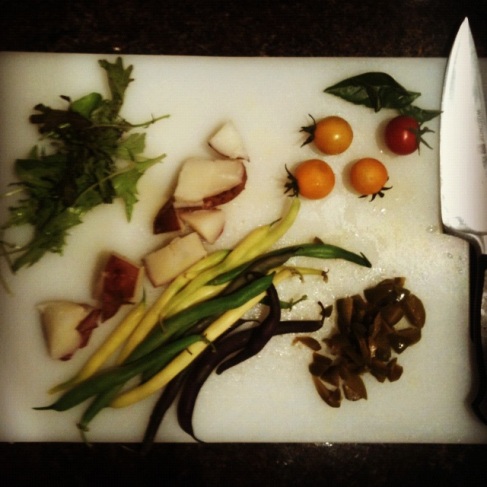Did you know that an extremely high percentage of Canadians (and by ‘extremely high’ I think I mean 90%) live within 100 miles of the Canada-USA border? One reason for this is that Canada can get pretty freaking cold. “Inhospitable” is one word that an American friend used.
Case in point: it’s not even October, and the leaves are changing to beautiful fall colours. Well, north of the city they are. Driving north, you can visibly see the changing colours. Fun fact: this is the reason why Canadian Thanksgiving is at least one month before our American counterparts’ Thanksgiving. It’s a little chillier here, and so our harvest is earlier.
I took a trip to Algonquin Provincial Park with my wonderful family this past week to do a little hiking and take in the beautiful fall colours. Algonquin is past the magical 100 miles from the border; there aren’t too many people around and we can be assured that there will be few Americans (I joke!).
And this trip has become my ‘love list’ for the week.
Being outside in nature is truly nutrition for the soul. Here are some photos and highlights from the trip.
Ahh, the air. If we’ve developed our taste buds and palettes to detect sophisticated nuances in food and wine, why can’t we do the same thing with the air we breathe?
The mushrooms are pretty cool. As I crouched over several varieties, I couldn’t help but think of the song “Tempted to Touch.” I haven’t yet reached mushroom foraging status, but I can look, can’t I?
No city noise. Living in the city means that noise just doesn’t quit. But ahh, being out of the city is lovely and quiet. Especially past the magical 100 miles mentioned earlier. And this lack of “city noise” includes the noise that resides in our minds. By unplugging from this noise, we can engage with what really matters (probably not the iPhone 5).
Initials carved into birch trees. Street art in the woods.
Parking it on fallen trees. Because you can still be silly in the woods.
But what about the food, you ask. Any meal consumed after a walk out in the woods tastes great!
Picnic lunches consisted of my easy to transport Late Summer Lentil Salad, coconut water, almond cookies and sheep cheese from the Trinity Bellwoods farmers’ market. Dinner was Georgian Bay caught whitefish. And while we’re on the topic of food, it’s soup season, baby! Be sure to check back this week for a delicious soup recipe that bridges the gap between late summer and early fall.
Until then, keep tasting the air. What’s on your love list this week?
xo Andrea

















